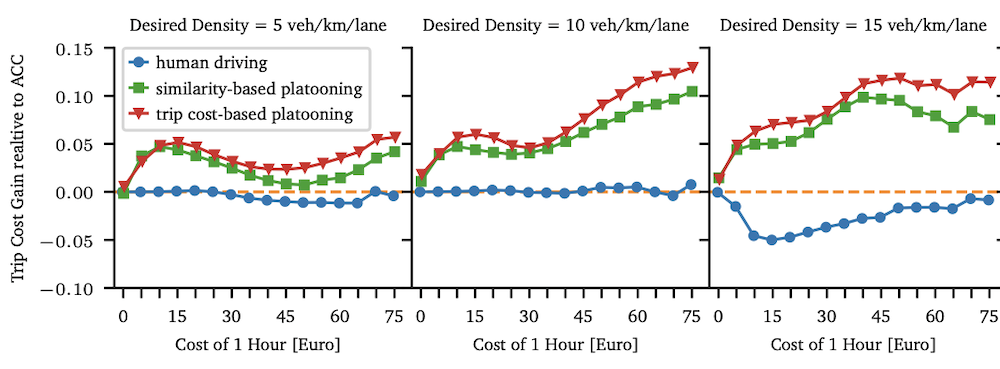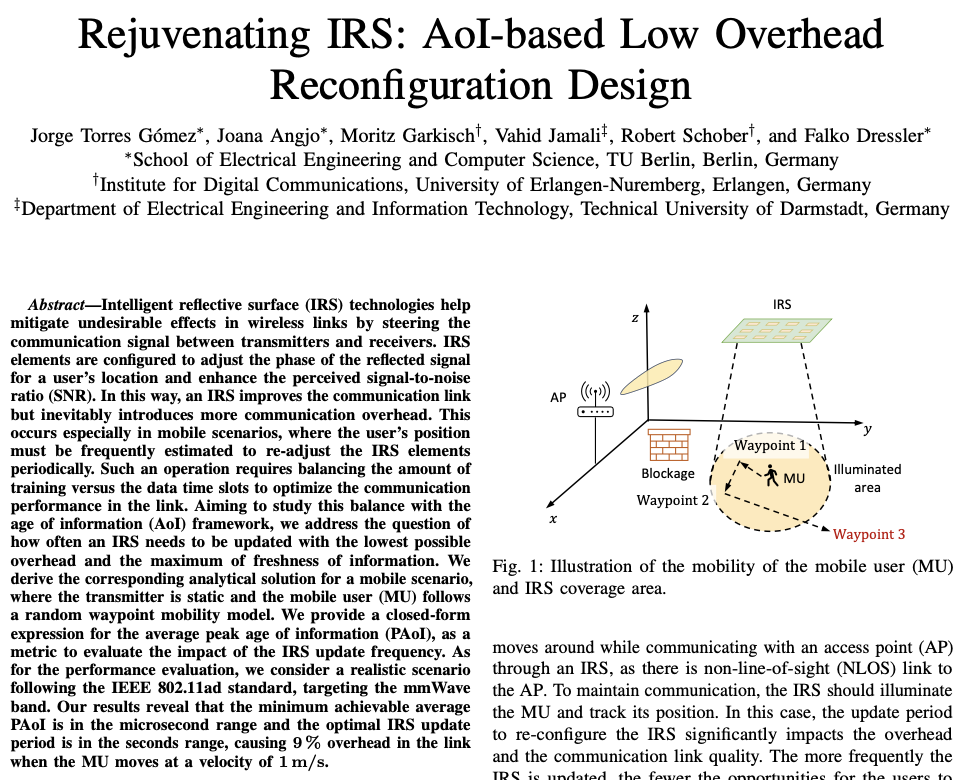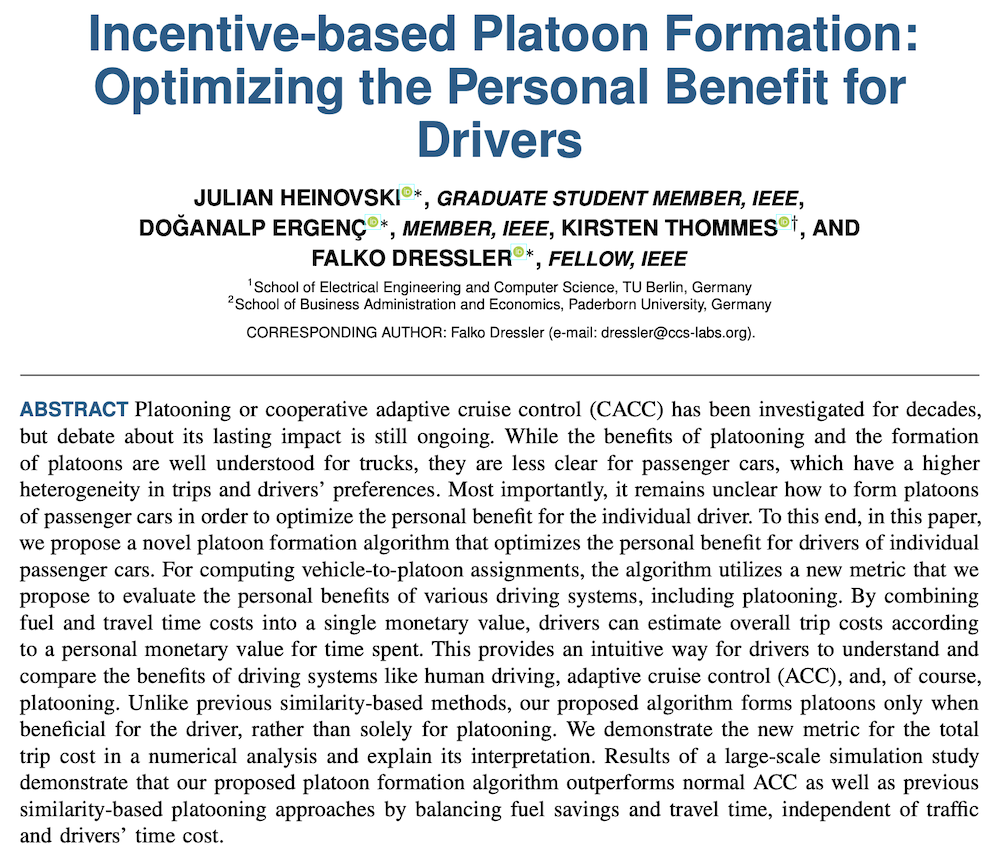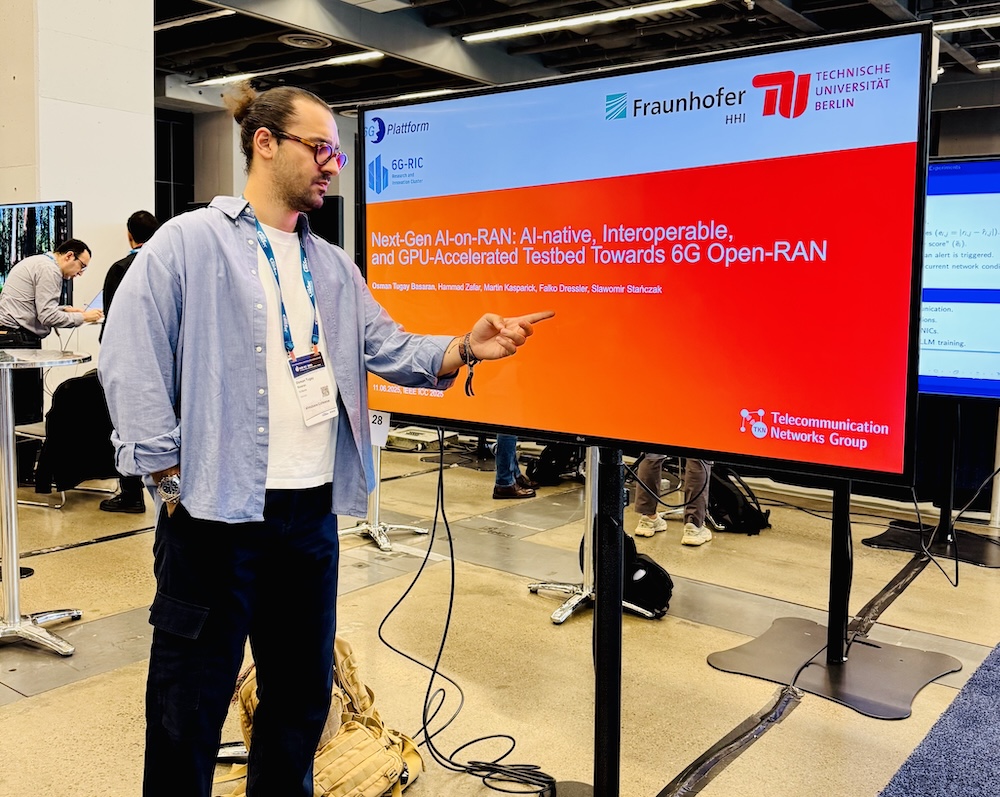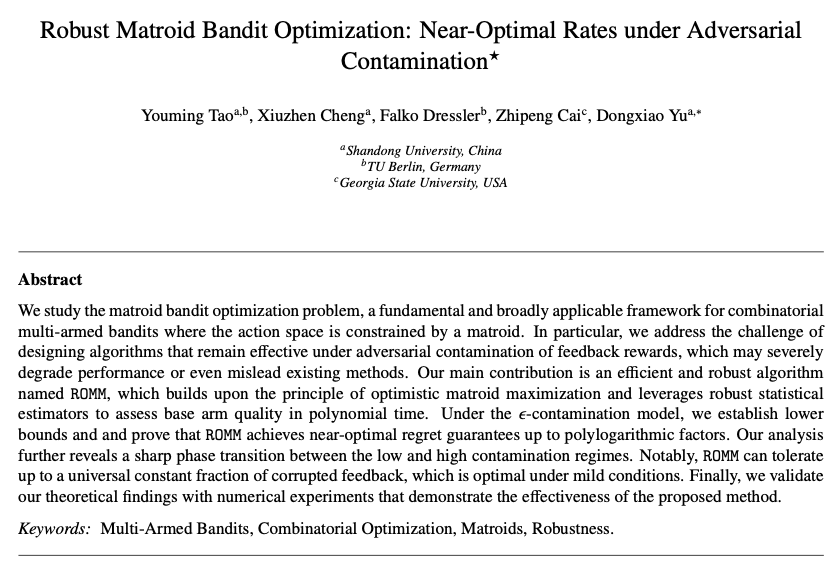Literature Database Entry
cocar2009feasibility
Christian Birle, Ben Borsetzky, Yi Chen, Ulrich Dietz, Guido Gehlen, Stefan Gläser, Gordian Jodlauk, Jürgen Kahle, Gerhard Nöcker, Armin Schmidt, Christoph Sommer and Sabine Sories, "CoCar Feasibility Study: Technology, Business and Dissemination," CoCar Consortium, Public Report, May 2009.
Abstract
As a result of a structured assessment, Cellular Hazard Warning (CHW) has been chosen as the most challenging and valuable application to be investigated within the Cooperative Cars (CoCar) feasibility study. CoCar CHWs are safety-critical warnings exchanged in high speed and with low latency in cellular communication systems. CoCar CHW provides drivers with the opportunity to adapt vehicle speed and inter-vehicle distance in a timely manner, leading to a higher situational awareness of unforeseen danger or, in other words, extending the telematics horizon. This report summarizes key findings from a technical and a commercial point of view. # Final Conclusions and Outlook # From a technical point of view, CoCar CHW has been identified as a feasible application in today’s Universal Mobile Telecommunications System (UMTS) networks with their latency well below one second and with the necessary capacity available to exchange CoCar CHWs. [1 Both the functional set up and the simulation performance results could also be verified in a CoCar live demonstration on May 14th 2009 in Munich.] For a full rollout, the utilization of a broadcast mechanism would be beneficial. Here, Multimedia Broadcast Multicast Service (MBMS) has been identified as the technology of choice. From a commercial point of view, it was satisfactorily shown that CoCar CHW can provide valuable benefits for individual drivers, business and governmental customers and society in general. Due to the critical mass phenomenon and direct network effects, the development, introduction and deployment of CoCar CHW will require the combined effort of all market participants. Two footprints for cooperative Value Creation Architectures (VCAs) have been developed and discussed in detail. Cooperative telematics services like CoCar CHW should be introduced as service bundles together with standalone services like eCall to exploit functional, technical and cost synergies. CoCar CHW could become operational in 2014 following a two-year equipment rollout phase. The equipment rate will reach 15 % by the end of 2014, the first year of operations, and 93 % in 2023, the 10th year. The corresponding business case identifies relatively high investment barriers on one hand, but extraordinary opportunities on the other. In summary, the continuation of the CoCar CHW development and introduction is recommended unconditionally. Future research should cover more specific Benefit Cost Ratio (BCR) analyses, more in-depth user requirements and the preparation of valid business cases for various actors and stakeholders. From a technical point of view, the performance of evolved cellular technologies, such as the emerging radio access technology Long Term Evolution (LTE) and the service management platform IP Multimedia Subsystem (IMS), should be further investigated. In the following, the key findings of the technical and the commercial feasibility study are presented in more detail. # Technical Feasibility – Key Findings # Technically the CoCar system comprises in-vehicle systems that send and receive warnings via a mobile cellular network. These warnings are processed by the CoCar Information System, which consists of three central logical components: Reflector, Geocast Manager and Aggregator. The Reflector re-directs CoCar CHWs into the vicinity of the hazard so that vehicles close by are warned immediately of time-critical and hazardous situations. This can be achieved within a vehicle-to-vehicle transmission delay of a few hundred milliseconds. The precise value depends on network parameters, e.g. the chosen physical channel. The Reflector also sends a copy of each CHW to the Aggregator. The Aggregator consolidates the CHWs with external information and evaluates, whether or not an incident is relevant to an extended geographical area. Thus, by correlating incidents by time, location and type of warning, it is possible to derive a holistic picture of the road traffic with a higher level of information. An intelligent reasoning algorithm would combine individual warnings classified by type into consolidated events. In a third step, the Aggregator determines the area where a CoCar CHW should be distributed and uses the Geocast Manager to set up the dissemination. The CoCar project developed dedicated protocols for both reflected and aggregated data. The service basically comprises two use cases: the upload from the vehicle to the CoCar Information System and the CoCar CHW distribution to the receivers. The Fast Traffic Alert Protocol (FTAP) utilizes small messages of less than 100 byte to realize fast data transmission. For aggregated data, the Transport Protocol Expert Group (TPEG) protocol adds flexibility and extensibility. The regular upload of less time critical traffic probe data is implemented using the Traffic Probe Data Protocol (TPDP) defined by CoCar. All developed application layer protocols are based on the Internet Protocol (IP) and can thus operate generically on various access systems. An overview of candidate cellular technologies as bearer for CHW is given within the report. The technology in focus of the technical feasibility study was UMTS and its enhancement High Speed Packet Access (HSPA). In detailed performance studies, the upload of binary and XML coded CHW messages was studied, using either the common Random Access Channel (RACH) or the Dedicated Channel (DCH). Furthermore, the distribution of CoCar CHWs via the network to the receiving vehicles via unicast and broadcast mechanisms was investigated. It was shown that, in general, the mean delay for a CoCar CHW from source to sink can be well below or at least on the order of 500 ms making it attractive for a variety of telematics services spanning safety, comfort and information services. To realize CHW with today’s UMTS and HSPA networks, the use of common channels is recommended. Dedicated and shared channels make sense for downloads and uploads or peer-to-peer applications exchanging larger volumes of data. For higher service penetration rates, i.e. a full deployment scenario, a resource efficient broadcast channel – as offered by MBMS – is recommended for CHWs distribution. # Commercial Feasibility – Key Findings # CoCar CHW clearly contributes to socio-economic goals with significant safety and traffic impacts that result in monetary benefits of nearly half a billion e per year in Germany in its fully rolled out version. The BCR is estimated at 2 for the total system benefits and costs, respectively at more than 10 for the ratio of safety impacts and state-run subsidies. This implies that every spent e leads to societal benefits of 2 e respectively of more than 10 e, if only the state-run subsidies are considered as costs. Not yet included in this assessment are other positive effects such as employment and environmental effects, tax revenues and innovation capabilities. In order to design stable value creation architectures for the broad range of possible actors in each value creation step, the pros and cons of different VCAs are discussed in detail. Depending on who is shaping the market, setting the rules and is willing and able to take risks, the outlined VCAs are: (1) an Original Equipment Manufacturer (OEM) driven model, (2) a Personal Navigation Device (PND) manufacturer driven model, (3) an Automobile Association driven model, (4) a Mobile Network Operator (MNO) driven model and (5) two cooperative models. A crucial disadvantage of models 1 to 4 is the fact, that one market shaper alone will be neither able nor willing to invest in the necessary critical mass of CoCar CHW terminals and to contribute sufficiently to positive direct network effects. Mainly for these reasons, market participants will have to cooperate with each other to increase the service value and the single benefit of each partner conjointly. Within the Telematics Platform Provider (TPP) model (Figure 1), a TPP plays an active market shaper role and acts as the central contact point for all customers. The TPP provides comprehensive processes that may comprise first and second-level support, contract management, billing and lifecycle management. Additionally, the TPP could act as a payment clearance platform, controlling and allocating the revenue streams from the vendors to the service providers and, in return, from customers to vendors. The technical operations of CoCar CHW could also be provided by the TPP. From an organizational point of view, the TPP could be an industry-independent start up or be partially or completely owned by one or more of the market participants (e.g. OEMs and / or MNOs). OEMs will provide PND manufacturers and possibly other after-sales market players with a bundle of defined sensor data that will be exchanged via a dedicated data exchange interface. In return, OEMs will receive higher customer value for their own line-fitted solutions, an increased customer satisfaction and a wider scope in pricing. Such a flexible value creation architecture based on a market shaping TPP will allow all market participants to play CoCar CHW according to their competitive strategy (differentiation or cost leadership). The implementation and deployment of such a promising VCA is threatened by a number of risks. OEMs in particular will carefully consider their risks regarding the return on investment, product liability, and the costs of potential recall campaigns. It is assumed that OEMs are willing and able to take these risks and moreover support a cooperative VCA for two reasons. Firstly, a conjoint CoCar CHW approach can achieve promising business outlooks (see CoCar CHW business case). Secondly, value-added services like Customer Relationship Management (CRM) and Vehicle Relationship Management (VRM) can be made possible or improved significantly, resulting in high business benefits and additional refinancing sources for the units’ installation costs. The product liability risk remains a serious potential show stopper whose impact must be kept as small as possible by legal measures. It is recommended that CoCar CHW will be offered in a bundle with standalone services like eCall and dynamic route navigation. Such a service bundle would make sense from a functional, technical and commercial point of view: Functionally, CoCar CHWs very well amend existing traffic information services with real-time data, and can therefore become an additional source of information for dynamic route navigation. Furthermore, CoCar CHWs might become an input source for in-vehicle Advanced Driver Assistance Systems (ADASs). Technically, the service bundle will make use of the cellular communication interface, which allows the realization of synergies. Additional services like remote software management, bCall and other value-added services can be easily included. Commercially, the bundle will provide an attractive added value for potential customers. This added value might be a crucial purchase driver for those customers that have been indecisive in buying a standalone service. The service could become operational in 2014 following a two-year equipment rollout phase. Such a rollout phase in advance of the service operations is necessary because a minimum equipment rate estimated at 10 % has to be reached before the users will perceive sufficient benefits from the service core value proposition. Regarding the CoCar CHW equipment rate, it is assumed that 50 % of all new vehicles as of 2012 will be equipped with CoCar CHW with a subsequent annual growth of 5 % in the equipment rate. Additionally, retrofitted vehicles will contribute to the overall penetration rate as of 2014 with 5 % of all unequipped vehicles and an annual increase of another 5 %. The resulting equipment rate will reach 15 % by the end of 2014, the first year of operations, and 93 % in 2023, the 10th year of operations. CoCar CHW business case calculations for Germany result in a Net Present Value (NPV) of more than 4 billion e at a Weighted Average Cost of Capital (WACC) rate of 8 % for the period of 2012 to 2023. Assuming that state-run subsidies will be granted, the Earnings Before Interest, Taxes, Depreciation and Amortization (EBITDA) won’t be negative at any time. Nevertheless, this positive result can not hide the fact that about half a billion e have to be invested before the operational start of the service. Break-even will not be reached until 2016, the third year of operation. The discounted cumulative cash flow will not turn positive before 2017. These facts result in a business case with relatively high investment barriers on one hand and extraordinary opportunities on the other. A sensitivity analysis shows that both Capital Expenditures (CAPEX) and Operational Expenditures (OPEX) are clearly dominated by vehicle related costs.
Quick access
Authors' Version ![]() (PDF on this web site)
(PDF on this web site)
BibTeX ![]()
Contact
Christian Birle
Ben Borsetzky
Yi Chen
Ulrich Dietz
Guido Gehlen
Stefan Gläser
Gordian Jodlauk
Jürgen Kahle
Gerhard Nöcker
Armin Schmidt
Christoph Sommer
Sabine Sories
BibTeX reference
@techreport{cocar2009feasibility,
author = {Birle, Christian and Borsetzky, Ben and Chen, Yi and Dietz, Ulrich and Gehlen, Guido and Gl{\"{a}}ser, Stefan and Jodlauk, Gordian and Kahle, J{\"{u}}rgen and N{\"{o}}cker, Gerhard and Schmidt, Armin and Sommer, Christoph and Sories, Sabine},
title = {{CoCar Feasibility Study: Technology, Business and Dissemination}},
institution = {CoCar Consortium},
month = {5},
type = {Public Report},
url = {http://www.aktiv-online.org/english/downloads/CoCar_D04_\%20public.pdf},
year = {2009},
}
Copyright notice
Links to final or draft versions of papers are presented here to ensure timely dissemination of scholarly and technical work. Copyright and all rights therein are retained by authors or by other copyright holders. All persons copying this information are expected to adhere to the terms and constraints invoked by each author's copyright. In most cases, these works may not be reposted or distributed for commercial purposes without the explicit permission of the copyright holder.
The following applies to all papers listed above that have IEEE copyrights: Personal use of this material is permitted. However, permission to reprint/republish this material for advertising or promotional purposes or for creating new collective works for resale or redistribution to servers or lists, or to reuse any copyrighted component of this work in other works must be obtained from the IEEE.
The following applies to all papers listed above that are in submission to IEEE conference/workshop proceedings or journals: This work has been submitted to the IEEE for possible publication. Copyright may be transferred without notice, after which this version may no longer be accessible.
The following applies to all papers listed above that have ACM copyrights: ACM COPYRIGHT NOTICE. Permission to make digital or hard copies of part or all of this work for personal or classroom use is granted without fee provided that copies are not made or distributed for profit or commercial advantage and that copies bear this notice and the full citation on the first page. Copyrights for components of this work owned by others than ACM must be honored. Abstracting with credit is permitted. To copy otherwise, to republish, to post on servers, or to redistribute to lists, requires prior specific permission and/or a fee. Request permissions from Publications Dept., ACM, Inc., fax +1 (212) 869-0481, or permissions@acm.org.
The following applies to all SpringerLink papers listed above that have Springer Science+Business Media copyrights: The original publication is available at www.springerlink.com.
This page was automatically generated using BibDB and bib2web.

